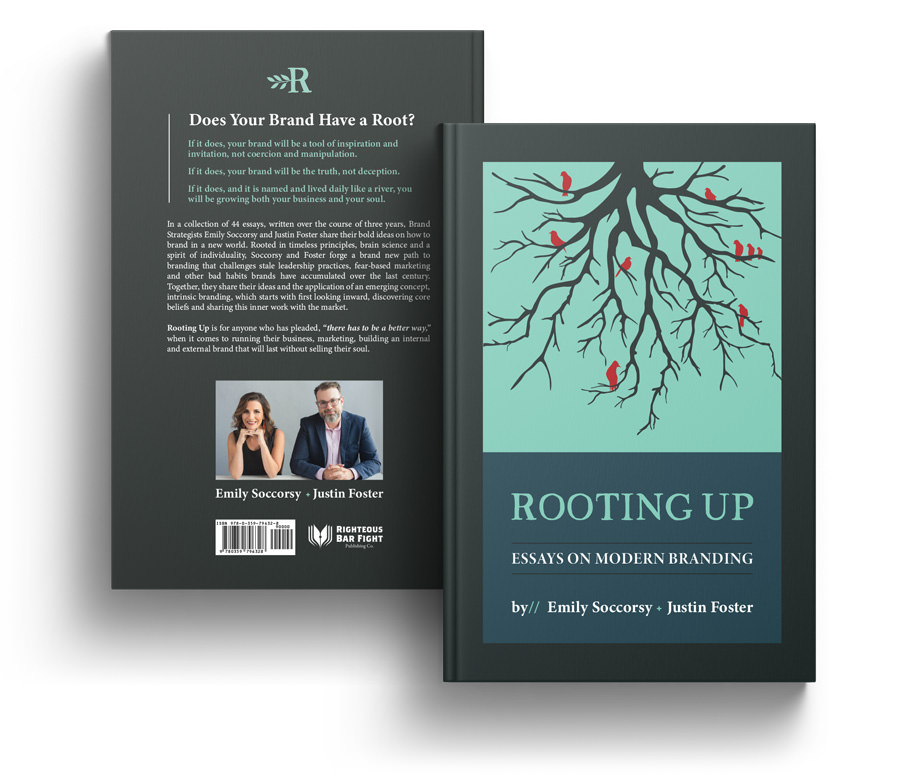Filed Under: 21st Century Branding, Beliefs-Based Branding, Case Studies
As little as possible, mate.
Surprised?
You’ve been taught to believe that marketing is a cost center.
You’ve been trained to think that when you invest in marketing you are buying some tactic or system.
No and no.
Marketing becomes a revenue center when it is executed as an artful and soulful expression of your brand.
The best brands understand this. See …
Sure, these brands spend money on marketing – but not just on box-checking, budget-spending activities. Every marketing activity is centered around promoting the idea and feeling behind the brand.
Here are five things to spend your precious marketing dollars on.
- Develop the leadership skills of your marketing team members. To move the numbers, you must move the people (We first wrote about this here). That includes your marketing numbers. Do not relegate your marketing leader to the position of order taker. If you instead elevate them — as a human, as a professional, as a strategic thinker, you will gain additional business savvy on your executive team and results in the marketing realm. How to do this? Encourage them to work with a brand coach, attend professional events, or join a mastermind group.
- Build a community. We are firmly convinced that once you have the foundational elements of brand nailed down (mission, message, visuals, digital, content — all work that is begun during a Root Session), your best money is spent on building community. The first community is the one within your walls – your employees. Then your customers. Shower them with attention. Make them famous. Elevate employees and customers to be the face of your brand — not just your executives.
- Content. Content. Content. Today, every brand worth their salt is an inspiration or information source. If you do not view your public presence as an opportunity to educate your audience, you are missing out. This doesn’t mean cutting-and-pasting from your industry website or purchasing canned content. It means allocating resources to tell stories. Think like a small town newspaper.
- Experiences. This covers a large swathe but definitely includes digital experiences (web, social, online events) and live experiences such as in-person events. Experiences are conversation generators. They get people talking to each other about your brand in ways that advertising and PR simply can’t beat.
- Activities that stimulate or accelerate word-of-mouth. Word of mouth is not generated by bathing yourself in bold, meaningless and completely subjective platitudes such as, “We are the industry leader.” To generate word-of-mouth, you must first make people feel what you stand for. You must speak in simple, unexpected and emotional ways about your mission, your message and invite people to share them in some real way (see experiences). The more real and delightfully surprising the activity you can present, the better.
What to not spend marketing dollars on?
- Demographic-based campaigns. Demographics are generally useless data points; relics of the “Mad Men” age where large groups had predictable buying and media consumption habits.
- Complicated marketing technology. This includes complex CRM systems, social media management and web platforms. Large brands can absorb the financial and energy suck of complexity but the rest of us have plenty of access to inexpensive, agile technology.
- Lists. For the most part, the best part of purchasing a list is the opportunity to become a spammer. Yes, that’s the best part. Here’s a simple rule: have you ever bought anything from being emailed by a random stranger?
To directly answer the “how much money should I spend on marketing?” question, we posit this. The most valuable asset you have in your brand are the people who touch brand — employees and customers. So invest in them with this simple formula: allocate $100/year per each human that touches your brand.
If you invest in the “yes” list and say hell no to the “no” list, you will be 80 percent ahead of most brands.
But to make you even more successful in your marketing endeavors, consider doing a deep dive into the meaning of your brand. The roots, if you will. As a good friend of ours was describing to us recently, “The people at this company are good people, but they’ve been doing what they do for years and years and years and they have forgotten completely why.”
We’d love to help you remember.
Interested in developing a marketing leader in your organization? One of our favorite parts of our practice is working hand-in-hand to grow future marketing leaders, encouraging them to think more strategically and act more intentionally. We’d love to talk about our brand coaching for marketing leaders.
Emily Soccorsy + Justin Foster are cofounders of the intrinsic branding practice known as Root + River. Together with their defiantly different clients, they uncover then articulate the foundational elements of the brand. Then, they provide brand strategy and brand coaching as the brand is rolled out internally and externally. Obsessive about language and differentiation, Emily + Justin are also authors and speakers. Follow @rootandriver @fosterthinking and @emilyatlarge.
